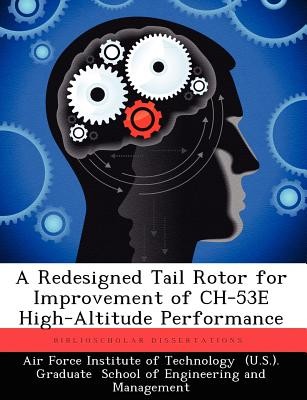
- We will send in 10–14 business days.
- Author: James a Pritchard
- Publisher: BiblioScholar
- ISBN-10: 1249401232
- ISBN-13: 9781249401230
- Format: 18.9 x 24.6 x 0.8 cm, minkšti viršeliai
- Language: English
- SAVE -10% with code: EXTRA
A Redesigned Tail Rotor for Improvement of Ch-53e High-Altitude Performance (e-book) (used book) | bookbook.eu
Reviews
Description
The Global War on Terror with specific emphasis on the recent military operation in Afghanistan has shown the invaluable contribution that heavy lift helicopters bring to the combatant commander. However, the flight range, altitudes and lift capability required to operate effectively in such an austere environment are pushing the limits of these helicopters. In an attempt to increase the operational capability of the CH-53E, this study will investigate methods for maximizing tail rotor effectiveness at high gross weights and high altitudes. This thesis records an analytical study designed to investigate the intricacies of tail rotor design and, by the computational simulation afforded through the Rotorcraft Comprehensive Analysis System (RCAS), define a tail rotor at high altitude that will reduce the tail rotor power required in hover by 10%. The versatility required of the tail rotor is seen due to the nature of the flow regime, which requires the tail rotor to effectively operate with inflow velocity from any direction, with a spanwise distribution of flow that produces Reynolds numbers up to 5.6e7 and with pilot commanded pitch changes from -10 to 24 degrees. With little to no assistance from the vertical fin, the tail rotor is most heavily relied on for antitorque response in hover; therefore, focus will be placed on hovering efficiencies tempered by solid forward flight and hover slide performance.
EXTRA 10 % discount with code: EXTRA
The promotion ends in 21d.04:59:35
The discount code is valid when purchasing from 10 €. Discounts do not stack.
- Author: James a Pritchard
- Publisher: BiblioScholar
- ISBN-10: 1249401232
- ISBN-13: 9781249401230
- Format: 18.9 x 24.6 x 0.8 cm, minkšti viršeliai
- Language: English English
The Global War on Terror with specific emphasis on the recent military operation in Afghanistan has shown the invaluable contribution that heavy lift helicopters bring to the combatant commander. However, the flight range, altitudes and lift capability required to operate effectively in such an austere environment are pushing the limits of these helicopters. In an attempt to increase the operational capability of the CH-53E, this study will investigate methods for maximizing tail rotor effectiveness at high gross weights and high altitudes. This thesis records an analytical study designed to investigate the intricacies of tail rotor design and, by the computational simulation afforded through the Rotorcraft Comprehensive Analysis System (RCAS), define a tail rotor at high altitude that will reduce the tail rotor power required in hover by 10%. The versatility required of the tail rotor is seen due to the nature of the flow regime, which requires the tail rotor to effectively operate with inflow velocity from any direction, with a spanwise distribution of flow that produces Reynolds numbers up to 5.6e7 and with pilot commanded pitch changes from -10 to 24 degrees. With little to no assistance from the vertical fin, the tail rotor is most heavily relied on for antitorque response in hover; therefore, focus will be placed on hovering efficiencies tempered by solid forward flight and hover slide performance.


Reviews